Greetings, fellow SkyWatchers! If we can keep the clouds and rain away, this will be an incredible weekend to enjoy some peaceful and relaxing time under the Moon and stars. We’ll begin with a heads up on a partial lunar eclipse whose beginning – or end – will be visible to most of us. Check your times carefully, because this one crosses the international date line! While you’re out, take a look at the lunar surface for some very interesting craters – or just relax with binoculars and suck in the photons of some curious variable stars. Are you ready? Then I’ll see you in the back yard…
June 25, 2010 – Today celebrates the birth of Hermann Oberth. Born in 1894 on this date, Oberth is considered to be the father of modern rocketry and space travel. But you won’t need a rocket to travel skyward as we gear up for the 2010 partial lunar eclipse!
A major section of western North and South America is in for treat as they will be able to see the beginning stages. These areas include Western Brazil, western Venezuela, and South American countries west of these locations. Believe it or not, a section of the southeastern United States will even be able to witness the eclipse – if it’s not raining!
The dividing line runs through the state of Georgia following a diagonal path north to Minnesota. States west of this line will also be within range of seeing the entire event until sunrise. On the west coast of the United States, the Moon will slide into umbral eclipse at 3:16 a.m. PDT, be deepest in shadow at 4:38 a.m. PDT, and the eclipse ends at 6:00 a.m. PDT – right about dawn. Locations that will be able to see the entire partial eclipse include the Pacific islands such as Hawaii, Polynesia, Fiji, Marshall Islands, New Zealand, Papua New Guinea, Australia, and most of Japan and the Philippines. Regions such as eastern China, the east edge of the USSR, Indonesia and the Thailand area will be able to see the very end of the 2010 partial lunar eclipse.
Despite bright skies tonight, take out your binoculars and look for a circlet of seven stars that reside about halfway between orange Arcturus and brilliant blue-white Vega. This quiet constellation is named Corona Borealis, or the Northern Crown.
Just northwest of its brightest star is a huge concentration of over 400 galaxies that reside over a billion light-years away from us. Known as Abell 4065, the Corona Borealis Galaxy Cluster is an area so small in apparent size that from our point of view we could eclipse it with a small coin held at arm’s length!
 June 26, 2010 – Happy Birthday, Charles Messier! Born in 1730 on this date, almost everyone recognizes the name of this French astronomer who discovered 15 comets. He was the first to compile a systematic catalog – the ‘‘M objects.’’ The Messier Catalogue (1784) contains 103 star clusters, nebulae, and galaxies. But did you know Lyman Spitzer, Jr, shared this birthday? Born in 1914, Spitzer advanced our knowledge of physical processes in interstellar space and pioneered efforts to harness nuclear fusion as a clean energy source. He studied star-forming regions and suggested that the brightest stars in spiral galaxies formed recently. Not only that, but Spitzer was the first person to propose placing a large telescope in space, and so launched the development of the Hubble Space Telescope!
June 26, 2010 – Happy Birthday, Charles Messier! Born in 1730 on this date, almost everyone recognizes the name of this French astronomer who discovered 15 comets. He was the first to compile a systematic catalog – the ‘‘M objects.’’ The Messier Catalogue (1784) contains 103 star clusters, nebulae, and galaxies. But did you know Lyman Spitzer, Jr, shared this birthday? Born in 1914, Spitzer advanced our knowledge of physical processes in interstellar space and pioneered efforts to harness nuclear fusion as a clean energy source. He studied star-forming regions and suggested that the brightest stars in spiral galaxies formed recently. Not only that, but Spitzer was the first person to propose placing a large telescope in space, and so launched the development of the Hubble Space Telescope!
Tonight the mighty Moon will still rule the sky, providing a wonderful opportunity for casual inspection. Why not grab a telescope and view the lunar surface for a couple of telescopic challenges that are easy to catch? All you have to know is Mare Crisium!
On the southeastern shoreline is a peninsula that reaches into Crisium’s dark basin. This is Promontorium Agarum. On the western shore, bright Proclus lights the banks, but look into the interior for the two dark pockmarks of Pierce to the north and Picard to the south. Be sure to mark them on your notes!
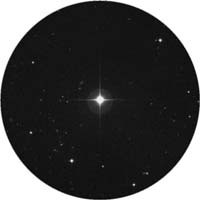 When you’re finished, point your binoculars or telescopes back toward Corona Borealis and about three finger-widths northwest of Alpha for variable star R (RA 15 48 35 Dec +28 09 24). This star is a total enigma. Discovered in 1795, most of the time R carries a magnitude near 6 but can drop to magnitude 14 in a matter of weeks – only to unexpectedly brighten again! It is believed that R emits a carbon cloud, which blocks its light. Oddly enough, scientists can’t even accurately determine the distance to this star! When studied at minimum, the light curve resembles a ‘‘reverse nova’’ and has a peculiar spectrum. It is very possible that this ancient Population II star has used all of its hydrogen fuel and is now fusing helium to form carbon.
When you’re finished, point your binoculars or telescopes back toward Corona Borealis and about three finger-widths northwest of Alpha for variable star R (RA 15 48 35 Dec +28 09 24). This star is a total enigma. Discovered in 1795, most of the time R carries a magnitude near 6 but can drop to magnitude 14 in a matter of weeks – only to unexpectedly brighten again! It is believed that R emits a carbon cloud, which blocks its light. Oddly enough, scientists can’t even accurately determine the distance to this star! When studied at minimum, the light curve resembles a ‘‘reverse nova’’ and has a peculiar spectrum. It is very possible that this ancient Population II star has used all of its hydrogen fuel and is now fusing helium to form carbon.
July 27, 2010 – Tonight we’ll again honor the June 26 birth of Charles Messier by heading toward the lunar surface first, in order to pick off another study object on our list – the twin crater pair Messier and Messier A.
Located in Mare Fecunditatis about a third of its width from west to east, these two craters will be difficult to find in binoculars, but not hard for even a small telescope and intermediate power. Indeed named for the famed French astronomer, the easternmost crater is somewhat oval in shape, with dimensions of 9 by 11 kilometers. At high power, Messier A to the west appears to have overlapped a smaller crater during its formation; and it is slightly larger at 11 by 13 kilometers. Although it is not on the challenge list, you’ll find another point of interest to the northwest. Rima Messier is a long surface crack, which runs diagonally across Mare Fecunditatis’s northwestern flank and reaches a length of 100 kilometers.
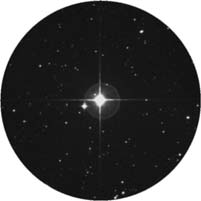 For variable star fans, let’s return to and focus our attention on S Coronae Borealis, located just west of Theta and the westernmost star in the constellation’s arc formation (RA 15 21 23 Dec +31 22 02). At magnitude 5.3, this long-term variable takes almost a year to go through its changes – usually far outshining the 7th magnitude star to its northeast – but will drop to a barely visible magnitude 14 at minimum. Compare it to the eclipsing binary U Coronae Borealis about a degree northwest. In slightly over 3 days, this Algol-type will range by a full magnitude as its companions draw together.
For variable star fans, let’s return to and focus our attention on S Coronae Borealis, located just west of Theta and the westernmost star in the constellation’s arc formation (RA 15 21 23 Dec +31 22 02). At magnitude 5.3, this long-term variable takes almost a year to go through its changes – usually far outshining the 7th magnitude star to its northeast – but will drop to a barely visible magnitude 14 at minimum. Compare it to the eclipsing binary U Coronae Borealis about a degree northwest. In slightly over 3 days, this Algol-type will range by a full magnitude as its companions draw together.
Until next week? Wishing you clear skies!
This article’s awesome illustrations are: Eclipse Chart courtesy of NASA, Abell 4065, R CorBor and S CorBor from Palomar Observatory, courtesy of Caltech, Lyman Spitzer historical image, Crisium in Decline courtesy of Shevill Mathers and Messier craters by Damien Peach. We thank you so much!


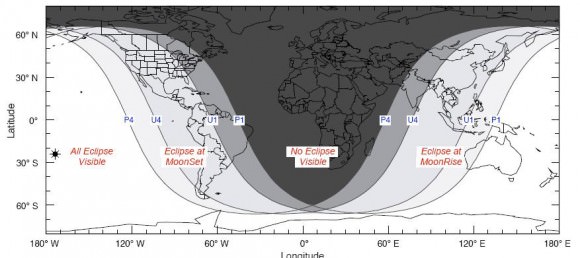
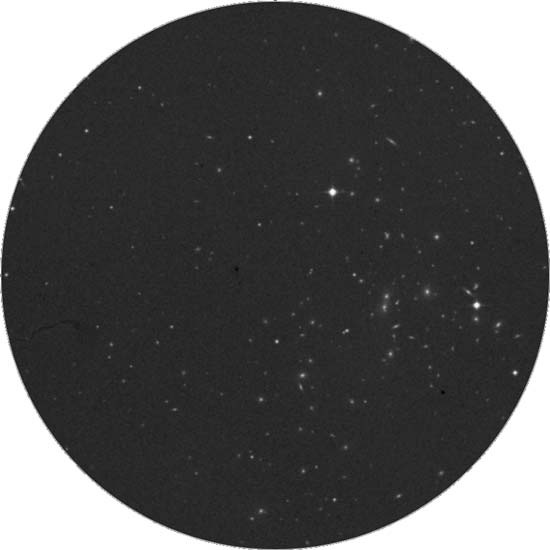
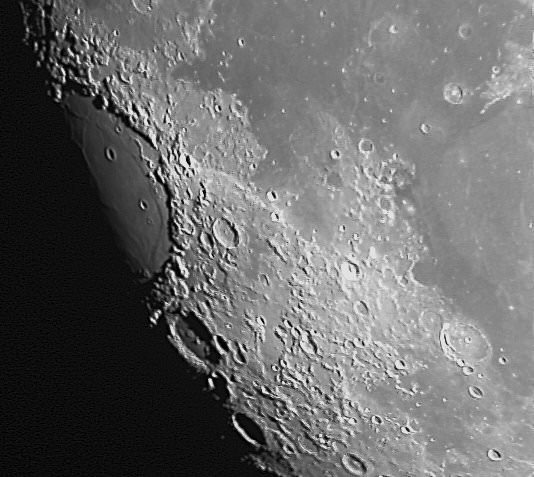
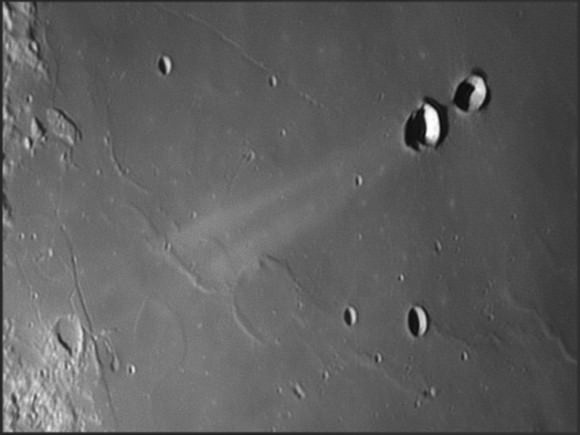
Always a welcome reminder. Thanks!
We’ve had house guests this weekend, but I still managed to get out Friday and Saturday nights and see the ISS. MAANO MAN! IS that thang ever bright now! I could make out two distinct bright spots which I assumed were the solar panel assembly’s… Nice. Some of the guests were suddenly turned into star gazer’s and *.Sat followers… I like!
Maybe tonight… the moon?